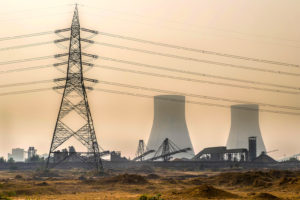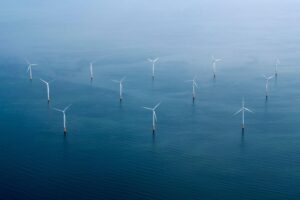Welcome to Carbon Brief’s DeBriefed.
An essential guide to the week’s key developments relating to climate change.
This week
COP29 kicks off
AGENDA FIGHT: The UN’s COP29 climate talks in Baku, Azerbaijan got off to a shaky start on Monday. The host nation attempted to repeat the UAE’s COP28 day-one “win” by pushing through a deal on Article 6.4, which governs international carbon trading, in a move described by one party as a “horrible precedent”. But, instead of adulation, the COP29 presidency landed in a lengthy “agenda fight”, resolved in classic COP fashion with a footnote. This fight reflected the key battlelines at the summit: the new climate finance goal; and how, where – or even whether – to carry forward COP28’s deal on “transitioning away from fossil fuels”. Carbon Brief journalists will host a free webinar to answer questions about COP29 later today. Sign up.
COUNTRY CLIMATE PLANS: Three nations – UAE, Brazil and the UK – have come forward with new UN climate plans, known as nationally determined contributions (NDCs), ahead of the February 2025 deadline. Climate Home News reported that the UAE’s plan was criticised for failing to include measures to restrain oil and gas production, which is projected to rise by a third by 2035. Meanwhile, the Brazilian climate NGO Climate Observatory said the emissions cut planned by the nation falls far short of its fair share towards limiting global warming to 1.5C. The UK’s emissions aim has broadly been welcomed by climate experts.
‘PAY UP’: With a new climate-finance goal seen as the main COP29 objective, UN secretary general António Guterres told leaders to “pay up, or humanity will pay the price”, Reuters reported. Early disputes over the goal produced a draft text with “pretty much every option…on the table”, showing “polarised views” between countries, explained the Hindustan Times. (For more on the negotiations, see Spotlight below.) Meanwhile, multilateral development banks announced that their climate-finance contributions will reach $120bn annually by 2030, according to Azernews.
World leaders summit
‘GIFT OF GOD’: The president of Azerbaijan, the country hosting COP29, caused a media firestorm by describing oil and gas a “gift of god” during his address at the opening of the conference’s World Leaders Climate Action summit. BBC News reported that Ilham Aliyev criticised “western fake news” about the country’s emissions and said nations “should not be blamed” for exploiting their fossil fuels. On Friday, senior figures including former UN secretary general Ban Ki-moon and former UN climate chief Christiana Figueres wrote in a letter that the COP process is “no longer fit for purpose”.
UNITED MESSAGES: Aliyev’s address at the summit was followed by interventions from 80 heads of state on Tuesday and Wednesday. Carbon Brief was in the room for the summit’s first day and summarised what each leader chose to focus on. Developing countries put on a united front calling for “climate justice” to be at the heart of climate-finance discussions, while European leaders implored all countries to release new plans to keep the 1.5C temperature goal in sight.
LEADERSHIP SCRAMBLE: After Donald Trump’s US election win, debate is swirling over which party might take over as a “leader” at the talks. The UK government told the Observer it intended to step up to “save COP29”. At its first press conference, the European Union said it will lead from the front at the negotiations – despite France’s environment minister deciding to skip the summit following a diplomatic spat with Azerbaijan. At the sidelines, a senior Chinese official told delegates that “China is willing to take a more active role in global climate governance”, according to Carbon Brief’s China Briefing.
Around the world
- SHELL COURT WIN: Oil giant Shell has won a “landmark case” in the Dutch courts, reported BBC News, overturning a ruling requiring the company to cut its carbon emissions by 45% by 2030 compared to 2019 levels.
- EMISSIONS RISE: A new Global Carbon Budget report has found there is “no sign” of the transition away from burning fossil fuels pledged at COP28, with emissions from coal, oil and gas rising by 0.8% in 2024, the Guardian reported. Carbon Brief has an in-depth write-up of the report.
- ‘THREE-YEAR STANDSTILL’: Current policies would put the world on track for 2.7C of warming by 2100 – following a “three-year standstill” in significant climate progress, according to a Climate Action Tracker report covered by the New York Times.
- TRUMP MOVES: Donald Trump is expected to nominate former Republican congressman Lee Zeldin as head of the Environmental Protection Agency (EPA), a federal body responsible for enforcing climate rules, according to the New York Times. The Hill reported that, in a recent interview, Zeldin said that the Trump administration would “roll back regulations that are forcing businesses to struggle”.
- VALENCIA PROTESTS: Tens of thousands of people took to the streets of Valencia, Spain last weekend, calling on the local leaders to resign after more than 200 people were killed in recent flooding, according to the Guardian.
12%
The proportion of heads of state speaking at COP29 that were female, based on the official running order.
Latest climate research
- Human-induced climate change has driven a 1.49C temperature increase compared to a pre-1700 baseline, according to a new Nature Geoscience study using Antarctic ice-core data.
- Air temperatures inside caves in the European Alps have increased by around 0.2C per decade over the past 20 years, a new Scientific Reports study found.
- A new research paper in Nature Ecology and Evolution found that the capacity of land to store carbon has weakened during warm extremes over the past 40 years – mainly in tropical regions.
(For more, see Carbon Brief’s in-depth daily summaries of the top climate news stories on Monday, Tuesday, Wednesday, Thursday and Friday.)
Captured
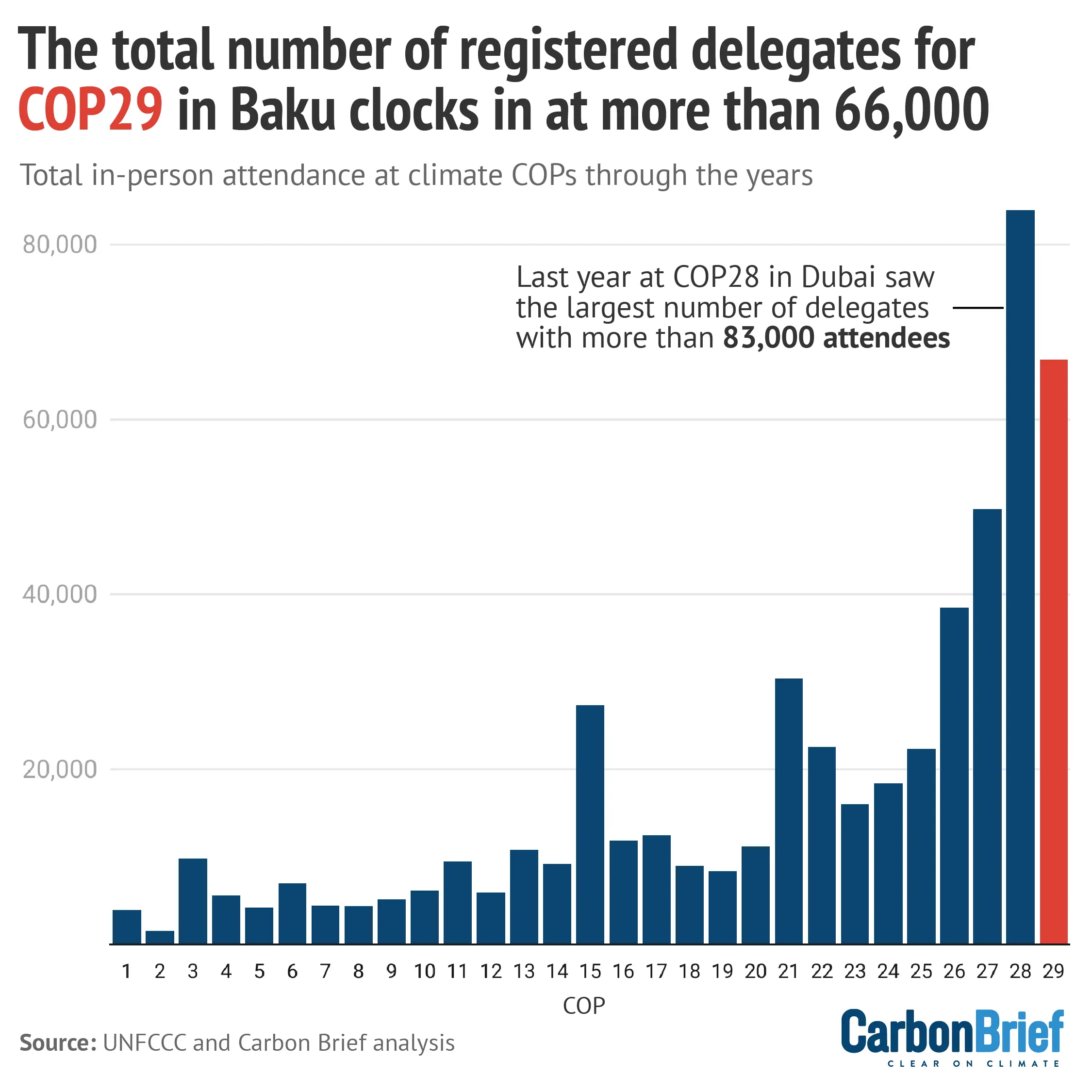
More than 65,000 delegates have registered to attend COP29 in Baku, potentially making it the second-largest COP on record. This total is more than 15,000 lower than the record-breaking COP in Dubai last year – and marks the first time in seven years that a COP is not larger than its predecessor. According to Carbon Brief analysis, host country Azerbaijan has the largest delegation at the summit, with 2,229 people registered. This is followed by Brazil (1,914), Turkey (1,862), the UAE (1,011) and China (969).
Spotlight
Finance and fossil-fuel fights at COP29
This week, Carbon Brief outlines what to expect from the two biggest topics being negotiated at COP29.
Climate finance
Nations gathered at COP29 must agree on a global target to channel finance into climate action, known as the “new collective quantified goal” (NCQG).
There are major rifts between parties over virtually every aspect of the NCQG. As a result, negotiations got off to a shaky start.
Broadly, developing countries want developed countries to provide or “mobilise” at least $1tn a year to them, largely as grants. Developed country parties, such as the US and the EU, want a goal that does not rely entirely on them, including lots of private investment and input from the wealthier developing countries. Parties have diverging views on when the goal should be delivered, but dates broadly range between 2025 and 2035.
At the first opportunity, developing countries unanimously rejected the nine-page text meant as the starting point for negotiations and requested a rewrite.
Ali Mohamed, chair of the African Group of Negotiators, told journalists that the “biggest obstacle” was language that shifted responsibility away from developed countries’ obligation to provide funds to developing countries.
Having incorporated the views of all countries, the co-chairs facilitating the talks released a new version that had ballooned to 34 pages and was widely viewed as unworkable. There were more delays as parties only allowed the chairs to slightly streamline this text, producing one that was just a page shorter.
By this point, talks were entering the second half of the week and delegates expressed concerns that so little progress had been made. EU lead negotiator Jacob Werksman told a press briefing that they were “very worried”, lamenting that “more than a year of preparation” had gone into the initial text that had been rejected.
Negotiators are engaging in informal talks to hash out some of the less divisive elements, such as how easy it is for countries to access funds. Next week will see government ministers take over, with the goal of steering them through more controversial territories into a final conclusion.
Fossil fuels
Apart from climate finance, the other key battleground at COP29 is around how – or even whether – to carry forward the outcome of last year’s “global stocktake”, in which all parties agreed to help with “transitioning away from fossil fuels”.
This question was a major part of the “agenda fight” at the start of the summit. Disagreement centred on which part of the agenda would include the “UAE dialogue”, which was created to discuss “implementing the global stocktake outcomes”.
The Like-Minded Group of Developing Countries (LMDCs), including China and India, want this dialogue to focus exclusively on finance, as do the Arab Group and the African Group. Many others want a broader focus, taking in all stocktake outcomes, including fossil-fuel transition.
Supporters, including the EU, US, UK, small island states (AOSIS) and Latin American countries (AILAC), are pushing for text on ambitious climate action in several venues.
Ultimately, fossil-fuel transition could end up in a so-called “cover text” at COP29. This has become a space to include more political language that does not have a “home” elsewhere.
On Thursday evening, the Azerbaijan presidency began talks with parties on where to put text on climate ambition – including fossil-fuel transition – but it has yet to give more details on its plans.
Watch, read, listen
TRUMP FAILSAFE: Politico’s Power Play podcast spoke to Ali Zaidi, the White House’s national climate advisor, on whether Biden’s climate policies were built to outlast the incoming Trump administration.
EXXON SAYS STAY: In an interview with the Wall Street Journal, ExxonMobil CEO Darren Woods said Donald Trump “shouldn’t pull” the US from the Paris Agreement.
PARTISAN OVERFLOW: New DeSmog analysis found that industrial agriculture and biotechnology representatives “enjoyed privileged access” to the COP16 biodiversity summit negotiations, brought in on country badges.
Coming up
- 11-22 November: UN Climate Change Conference COP29, Baku, Azerbaijan
- 18-19 November: G20 heads of state summit, Rio de Janeiro, Brazil
- 18-22 November: International Maritime Organisation (IMO) Council 133rd Session, London
Pick of the jobs
- CNN, extreme weather editor | Salary: Unknown. Location: Hong Kong
- World Meteorological Organization (WMO)-World Health Organization (WHO) Joint Office, associate programme officer for climate and health | Salary: $50,377. Location: Geneva
- Columbia University Climate School, assistant/associate professor in climate finance | Salary: $200,000-$300,000. Location: New York
- Cooperative Institute for Modelling the Earth System (CIMES), Princeton University, summer research internships in atmospheric, oceanic and earth system science | Salary: $5,600-$6,300 for a 40-hour work week. Location: Princeton, New Jersey
- Wellcome Trust, head of communications for climate and health | Salary: £94,100. Location: London (hybrid, two days remote work)
DeBriefed is edited by Daisy Dunne. Please send any tips or feedback to debriefed@carbonbrief.org.
This is an online version of Carbon Brief’s weekly DeBriefed email newsletter. Subscribe for free here.
The post COP29 DeBriefed 15 November 2024: Azerbaijan’s shaky start; Finance and fossil fuels dominate negotiations; Free webinar today appeared first on Carbon Brief.
Greenhouse Gases
DeBriefed 10 October 2025: Renewables power past coal; Legacy of UK’s Climate Change Act; Fukushima’s solar future
Welcome to Carbon Brief’s DeBriefed.
An essential guide to the week’s key developments relating to climate change.
This week
Renewables overtake coal
‘HISTORIC FIRST’: Renewables have overtaken coal to become the world’s leading source of electricity for the first six months of this year in a “historic first”, BBC News said. The analysis, from the thinktank Ember, found the world generated “almost a third” more solar power in the first half of the year, compared with the same period in 2024, while wind power grew by “just over 7%,” reported the Guardian.
HEAVY LIFTING: According to the report, China and India were “largely responsible for the surge in renewables”, while the US and Europe “relied more heavily on fossil fuels,” the Guardian wrote. China built more renewables than every other country combined in the first half of this year, the newspaper added.
CONTINENTAL SHIFTS: A second report from the International Energy Agency (IEA) predicted a “surge” in global wind and solar capacity by 2030, but shaved 5% off its previous forecast, the Financial Times said. The IEA revealed that India is set to become the second-largest growth market for renewables after China, “with capacity expected to increase 2.5 times by 2030”, Down to Earth reported. The IEA also upped its forecast for renewables in the Middle East and north Africa by 23%, “helped by Saudi Arabia rolling out wind turbines and solar panels”, but halved the outlook for the US, the FT noted.
Around the world
- EV BOOM: Sales of electric and hybrid cars made up “more than half” of all new car registrations in the UK last month, a new record, according to data from the Society of Motor Manufacturers, reported BBC News.
- BANKING COLLAPSE: A global banking alliance launched by the UN to get banks to slash the carbon footprint of their loans and investments and help drive the transition to a net-zero economy by 2050 has collapsed after four years, Agence France-Press reported.
- CUTS, CUTS, CUTS: The Trump administration plans to cut nearly $24bn in funding for more than 600 climate projects across the US, according to documents reviewed by the Wall Street Journal.
- PEOPLE POWER: A farmer, a prison guard and a teacher were among those from the Dutch-Caribbean island Bonaire who appeared at the Hague on Tuesday to “accuse the Netherlands of not doing enough to protect them from the effects of climate change”, Politico reported.
400,000
The number of annual service days logged by the US National Guard responding to hurricanes, wildfires and other natural disasters over the past decade, according to a Pentagon report to Congress, Inside Climate News reported.
Latest climate research
- Politicians in the UK “overwhelmingly overestimate the time period humanity has left to bend the temperature curve”, according to a survey of 100 MPs | Nature Communications Earth and Environment
- Fire-driven degradation of the Amazon last year released nearly 800m tonnes of CO2 equivalent, surpassing emissions from deforestation and marking the “worst Amazon forest disturbance in over two decades” | Biogeosciences
- Some 43% of the 200 most damaging wildfires recorded over 1980-2023 occurred in the last decade | Science
(For more, see Carbon Brief’s in-depth daily summaries of the top climate news stories on Monday, Tuesday, Wednesday, Thursday and Friday.)
Captured

The UK’s Climate Change Act, landmark legislation that guides the nation’s response to climate change, is increasingly coming under attack from anti-net-zero right-leaning politicians. In a factcheck published this week, Carbon Brief explained how the UK’s Climate Change Act was among the first comprehensive national climate laws in the world and the first to include legally binding emissions targets. In total, 69 countries have now passed “framework” climate laws similar to the UK’s Climate Change Act, with laws in New Zealand, Canada and Nigeria among those explicitly based on the UK model. This is up from just four when the act was legislated in 2008. Of these, 14 are explicitly titled the “Climate Change Act”.
Spotlight
Fukushima’s solar future
This week, Carbon Brief examines how Fukushima helped to recover from nuclear disaster by building solar farms on contaminated farmland.
On 11 March 2011, an earthquake off the pacific coast of Japan caused 15m-tall waves to crash into the eastern region of Tōhoku, killing 19,500 people and injuring a further 6,000.
In the aftermath, flooding at the Fukushima Daichi nuclear power plant caused cooling systems to fail, leaching radioactive contaminants into the soil and leading to a major nuclear incident.
Some 1,200km2 around the site was restricted and up to 100,000 people were evacuated – in some cases forever.
In the years following, Japan entered a fraught debate about nuclear energy.
In 2010, nuclear power provided 25% of Japan’s electricity, but, in the years following the disaster, its 54 nuclear reactors were taken offline.
Successive governments have fought over reintroducing nuclear power. Today, some 14 reactors are back online, 27 have been permanently closed and another 19 remain suspended. (Japan’s newly-elected prime minister Sanae Takaichi has promised to make nuclear central to her energy strategy.)
Against this backdrop, Fukushima – a prefecture home to 1.8 million people – has emerged as a surprise leader in the renewables race.
In 2014, the Fukushima Renewable Energy Institute (FREA) opened with the twin goals of promoting research and development into renewable energy, while “making a contribution to industrial clusters and reconstruction”.
That same year, the prefecture declared a target of 100% renewable power by 2040.
Contaminated land
“A lot of these communities, I know, were looking for ways to revitalise their economy,” said Dr Jennifer Sklarew, assistant professor of energy and sustainability at George Mason University and author of “Building Resilient Energy Systems: Lessons from Japan”.
Once evacuation orders were lifted, however, residents in many parts of Fukushima were faced with a dilemma, explained Skarlew:
“Since that area was largely agricultural, and the agriculture was facing challenges due to stigma, and also due to the soil being removed [as part of the decontamination efforts], they had to find something else.”
One solution came in the form of rent, paid to farmers by companies, to use their land as solar farms.
Michiyo Miyamoto, energy finance specialist at the Institute for Energy Economics and Financial Analysis, told Carbon Brief:
“The [Fukushima] prefecture mapped suitable sites early and conducted systematic consultations with residents and agricultural groups before projects were proposed. This upfront process reduced land-use conflicts, shortened permitting timelines and gave developers clarity.”
As a result, large-scale solar capacity in Fukushima increased to more than 1,300 megawatts (MW) from 2012 to 2023, according to Miyamoto. Moreover, installed renewable capacity now exceeds local demand, meaning the region can run entirely on clean power when conditions are favourable, Miyamoto said.
Today, aerial pictures of Fukushima reveal how solar panels have proliferated on farmland that was contaminated in the nuclear disaster.

Charging on
Last year, 60% of Fukushima’s electricity was met by renewables, up from 22% in 2011. (The country as a whole still lags behind at 27%.)
And that is set to grow after Japan’s largest onshore windfarm started operations earlier this year in Abukuma, Fukushima, with a capacity of 147MW.
The growth of solar and wind means that Fukushima is already “ahead of schedule” for its 2040 target of 100% renewable power, said Miyamoto:
“The result is a credible pathway from recovery to leadership, with policy, infrastructure and targets working in concert.”
Watch, read, listen
OVERSHOOT: The Strategic Climate Risks Initiative, in partnership with Planet B Productions, has released a four-part podcast series exploring what will happen if global warming exceeds 1.5C.
DRONE WARFARE: On Substack, veteran climate campaigner and author Bill McKibben considered the resilience of solar power amid modern warfare.
CLIMATE AND EMPIRE: For Black history month, the Energy Revolution podcast looked at how “race and the legacies of empire continue to impact the energy transition”.
Coming up
- 12 October: presidential elections, Cameroon
- 13-14 October: Pre-COP, Brasilia, Brazil
- 13-18 October: World Bank Group/IMF annual meetings, Washington DC
- 14-17 October: 2nd extraordinary session of the Marine Environment Protection Committee at the International Maritime Organisation, London
- 15-16 October: Circle of Finance Ministers report
Pick of the jobs
- Buckinghamshire Council, principal climate change officer | Salary: £49,354-£51,759. Location: Aylesbury, Buckinghamshire
- Sustainable NI, sustainable business lead | Salary: £60,000. Location: Belfast, Northern Ireland
- Dialogue Earth, South Asia managing editor | Salary: £1,875 per month. Location: South Asia
DeBriefed is edited by Daisy Dunne. Please send any tips or feedback to debriefed@carbonbrief.org.
This is an online version of Carbon Brief’s weekly DeBriefed email newsletter. Subscribe for free here.
The post DeBriefed 10 October 2025: Renewables power past coal; Legacy of UK’s Climate Change Act; Fukushima’s solar future appeared first on Carbon Brief.
Greenhouse Gases
Guest post: How Caribbean states are shifting climate legislation
The Caribbean region is among the most vulnerable to climate change, despite historically contributing less than half of one percent of global greenhouse gas emissions.
Rising sea levels, extreme heat and more frequent and intense storms – such as the 2024 Hurricane Beryl, which made landfall in Grenada – pose urgent and growing threats to the small island states, coastal nations and overseas territories that comprise the Caribbean region.
With global progress to address climate change still too slow, Caribbean countries are taking matters into their own hands by enacting more robust legislation to help protect against climate risks.
In a new study published in the Carbon and Climate Law Review, we identified 78 climate laws and legally binding decrees across 16 Caribbean states, as well as two constitutional references to climate change and a growing recognition of the right to a healthy environment.
Our analysis suggests that, together, these developments are not only enhancing resilience, but also positioning Caribbean states as influential actors in the global climate arena.
Caribbean climate laws on the rise
Climate governance in the Caribbean has expanded significantly in recent years. In the past decade, countries such as Cuba and the Dominican Republic have embedded climate obligations and programmatic guidelines into their national constitutions.
At the same time, legislative recognition of the human right to a healthy environment is gaining momentum across the region. Six Caribbean nations now affirm the right in their constitutions, while 15 have recognised it through international instruments, such as the UN Council, UN Assembly and the Escazu Agreement, as shown in the figure below.
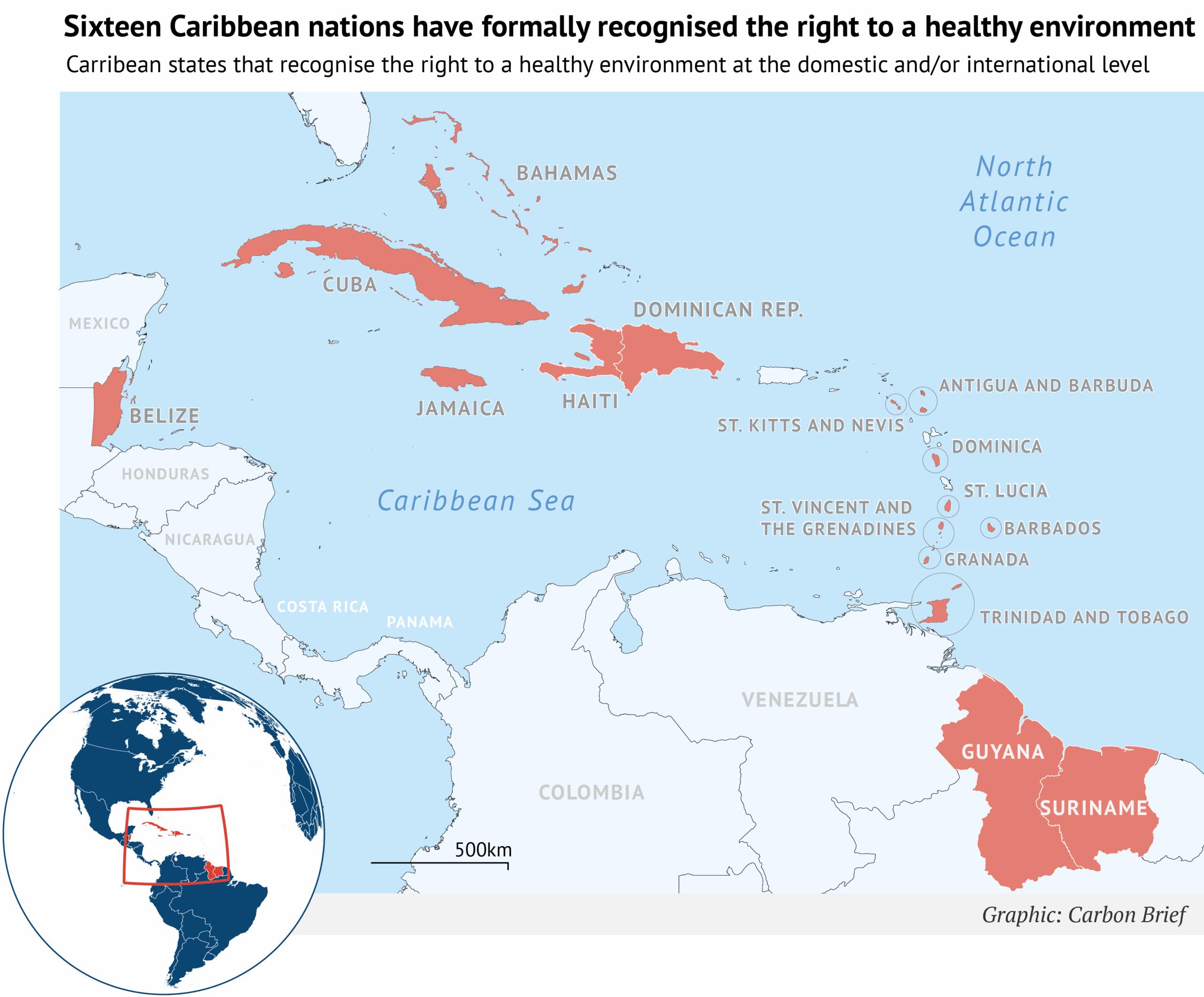
More recently, there has been a notable rise in targeted, sector-specific climate frameworks that go beyond broader environmental statutes.
Saint Lucia stands out as the only country with a climate framework law, or a comprehensive national law that outlines long-term climate strategies across multiple domains. Meanwhile, several other Caribbean governments have adopted climate-specific laws that focus on individual sectors, such as energy, migration and disaster management.
According to our analysis, more than a quarter of climate-relevant legislation in the region – comprising 21 laws and legally binding decrees – now has an explicit focus on climate change, as illustrated in the chart below.
Our research suggests that this represents an ongoing shift in legislative focus, reflecting changes in how climate legislation is being structured in one of the world’s most climate-vulnerable regions.
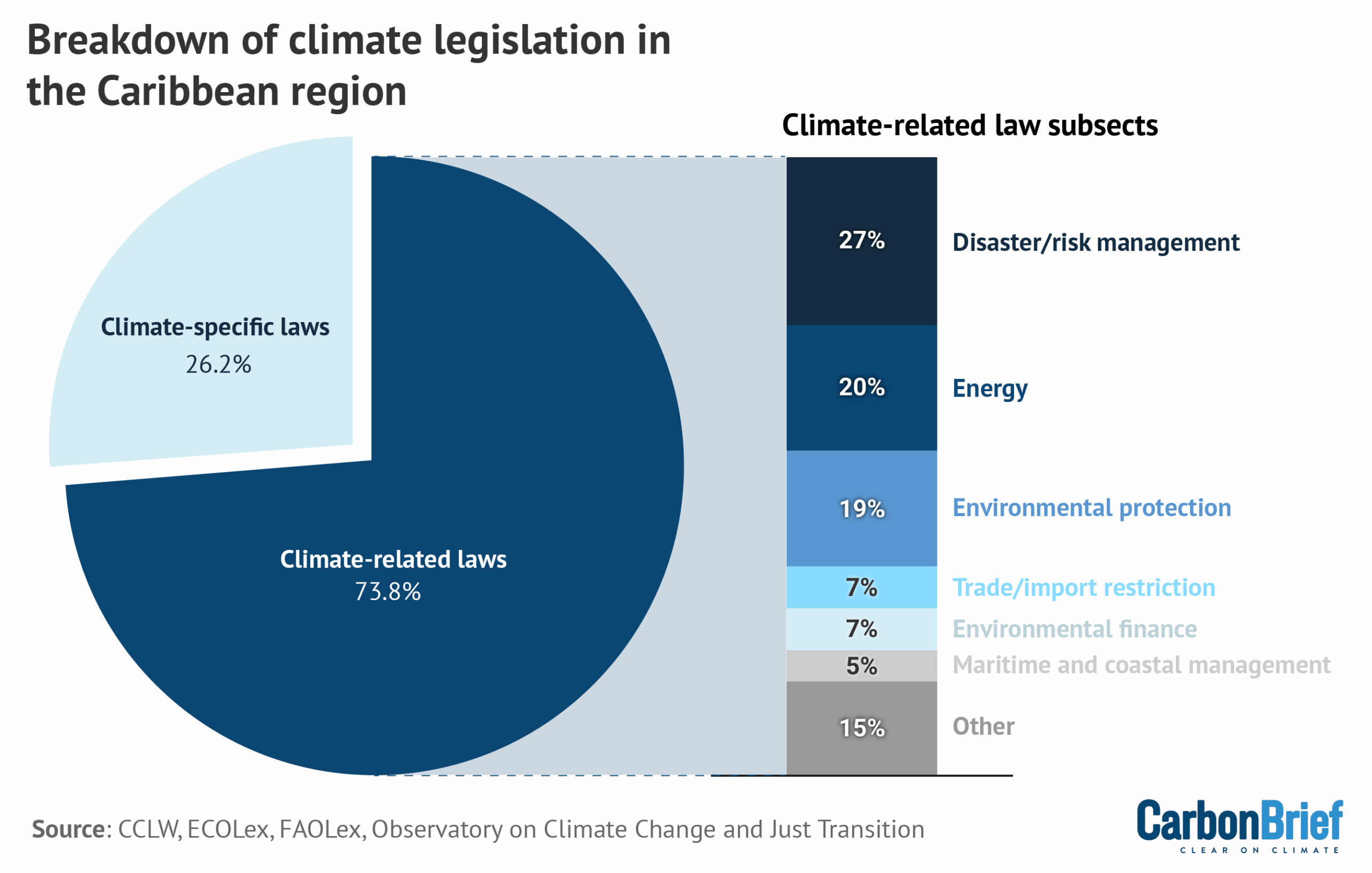
Caribbean nations are also advancing legal reforms to structure and institutionalise climate finance and market mechanisms directly into domestic law, aligned with Article 6.2 of the Paris Agreement.
For example, the Bahamas has introduced provisions for carbon credit trading, while Antigua and Barbuda, Barbados and Grenada have established national climate financing mechanisms to support mitigation and adaptation efforts.
Some states, including Belize and Saint Kitts and Nevis, have incorporated regional bodies such as the Caribbean Community Climate Change Centre – the climate arm of the intergovernmental Caribbean community organisation CARICOM – into national frameworks. This indicates an increasing alignment between regional cooperation and domestic law.
In addition to the influx of regulations specifically addressing climate change, Caribbean nations are also legislating broader environmental issues, which, in turn, could provide increased resilience from climate impacts and risks, as shown in the graph above.
Key trends in these types of climate-related laws include the expansion of disaster risk management governance, which addresses national preparedness for climate-induced weather events or related catastrophes. Likewise, energy law is an increasingly prominent focus, with countries including Antigua and Barbuda and Saint Vincent and the Grenadines integrating renewable energy and energy efficiency goals into national climate governance.
More broadly, many Caribbean nations have adopted wide-ranging and comprehensive environmental laws, many of which were developed in alignment with existing climate commitments. In combination, these legal developments reflect a dynamic and evolving climate governance landscape across the region.
Proactive vs reactive approaches
Despite general alignment with these broader regional trends, our research reveals distinct developmental pathways shaping domestic climate regulation.
In the eastern Caribbean, for example, we saw both proactive, long-term planning strategies and reactive, post-disaster reforms.
Saint Lucia’s multifaceted approach to climate resilience evolved steadily over the course of more than a decade. During this time, the country developed numerous adaptation plans, strengthened cross-sectoral coordination and engaged in institutional climate reforms in areas such as energy, tourism, finance and development.
More recently, the passage of Saint Lucia’s Climate Change Act in 2024 marked a milestone in climate governance, by giving legal force to the country’s obligations under the UNFCCC, the Kyoto Protocol and the Paris Agreement – making Saint Lucia one of the few small island states to incorporate global climate commitments into domestic law.
Our research indicates that this strategy has not only positioned the country as a more climate-resilient nation, but also solidified its access to international climate financing.
In contrast, Dominica’s efforts evolved more rapidly in the aftermath of Hurricane Maria in 2017, which destroyed over 200% of the country’s GDP. The storm’s impacts were felt across the country and hit particularly hard for the Kalinago people – the Caribbean’s last Indigenous community – highlighting the role of socioeconomic disparities in shaping climate vulnerability and resilience.
In response, the government passed the Climate Resilience Act, creating the temporary Climate Resilience Execution Agency for Dominica (CREAD).
Beyond establishing an exclusively climate-focused institution, the act aimed to embed resilience into governance by mandating the participation of vulnerable communities – including Indigenous peoples, women, older people and people with disabilities – in shaping and monitoring climate resilience projects.

As noted in a recent statement by the UN special rapporteur on Climate Change, Dr Elisa Morgera, these frameworks underscore the government’s ambition to become the world’s first “climate-resilient nation.”
Although challenges persist, Dominica’s efforts demonstrate how post-disaster urgency can drive institutional change, including the integration of rights and resilience into climate governance.
Uneven progress and structural gaps
Despite significant progress, our research shows that several key opportunities for climate governance across the Caribbean continue to exist, which could enable improvements in both resilience and long-term ambition.
The region’s legal landscape remains somewhat heterogeneous. While Saint Lucia has enacted a comprehensive climate framework law, the rest of the region lacks similar blanket legislation. This includes some states that entirely lack climate-specific laws, instead relying on related laws and frameworks to regulate and respond to climate-related risks.
Other nations have yet to adopt explicit disaster-risk management frameworks, leaving Caribbean populations vulnerable before, during and after climate emergencies. Most have yet to enshrine the right to a healthy environment at the national level.
Our research suggests that outdated legal frameworks are further limiting progress in addressing current climate risks. Because many of the longer-standing environmental laws in the region were adopted well before climate policy became a mainstream concern, some fail to address the nature, frequency and intensity of modern climate challenges, such as sea-level rise, tropical storms, wildfires, floods, droughts and other impacts.
More broadly, many Caribbean climate laws include limited integration of gender equity, Indigenous rights and social justice. As Caribbean nations such as Grenada and the Dominican Republic begin to link climate resilience with these issues, the region has an opportunity to lead by example.
Ultimately, capacity and resource constraints persist as significant barriers to implementation and adaptation.
The Caribbean region faces debt that exacerbates ongoing development challenges, a burden made heavier by the repeated economic shocks of climate-related disasters. Along with regional debt-for-resilience schemes, increased funding from high-emitting countries to support adaptation measures in climate-vulnerable nations – as endorsed under the Paris Agreement – is likely to be critical to ensuring the region’s climate laws can be executed effectively.
Global implications of Caribbean climate law
Our research suggests that Caribbean countries are outpacing other regions in terms of the scope and ambition of their climate laws. This legislation has the potential to serve as a model for climate-vulnerable nations worldwide.
Continuing efforts in the region show that legal frameworks in the field can not only drive resilience, embed rights and strengthen claims to international finance, but also highlight how regional cooperation and diplomacy can enhance global influence.
These findings demonstrate that innovation in climate law need not wait for action from major emitters, but can instead be led by those on the front lines of climate change.
The post Guest post: How Caribbean states are shifting climate legislation appeared first on Carbon Brief.
Guest post: How Caribbean states are shifting climate legislation
Greenhouse Gases
IEA: Renewables have cut fossil-fuel imports for more than 100 countries
More than 100 countries have cut their dependence on fossil-fuel imports and saved hundreds of billions of dollars by continuing to invest in renewables, according to the International Energy Agency (IEA).
It says nations such as the UK, Germany and Chile have reduced their need for imported coal and gas by around a third since 2010, mainly by building wind and solar power.
Denmark has cut its reliance on fossil-fuel imports by nearly half over the same period.
Renewable expansion allowed these nations to collectively avoid importing 700m tonnes of coal and 400bn cubic metres of gas in 2023, equivalent to around 10% of global consumption.
In doing so, the fuel-importing countries saved more than $1.3tn between 2010 and 2023 that would otherwise have been spent on fossil fuels from overseas.
Reduced reliance
The IEA’s Renewables 2025 report quantifies the benefits of renewable-energy deployment for electricity systems in fossil fuel-importing nations.
It compares recent trends in renewable expansion to an alternative “low renewable-energy source” scenario, in which this growth did not take place.
In this counterfactual, fuel-importing countries stopped building wind, solar and other non-hydropower renewable-energy projects after 2010.
In reality, the world added around 2,500 gigawatts (GW) of such projects between 2010 and 2023, according to the IEA, more than the combined electricity generating capacity of the EU and US in 2023, from all sources. Roughly 80% of this new renewable capacity was built in nations that rely on coal and gas imports to generate electricity.
The chart below shows how 31 of these countries have substantially cut their dependence on imported fossil fuels over the 13-year period, as a result of expanding their wind, solar and other renewable energy supplies. All of these countries are net importers of coal and gas.

In total, the IEA identified 107 countries that had reduced their dependence on fossil fuel imports for electricity generation, to some extent due to the deployment of renewables other than hydropower.
Of these, 38 had cut their reliance on electricity from imported coal and gas by more than 10 percentage points and eight had seen that share drop by more than 30 percentage points.
Security and resilience
The IEA stresses that renewables “inherently strengthen energy supply security”, because they generate electricity domestically, while also “improving…economic resilience” in fossil-fuel importer countries.
This is particularly true for countries with low or dwindling domestic energy resources.
The agency cites the energy crisis exacerbated by Russia’s invasion of Ukraine, which exposed EU importers to spiralling fossil-fuel prices.
Bulgaria, Romania and Finland – which have historically depended on Russian gas for electricity generation – have all brought their import reliance close to zero in recent years by building renewables.
In the UK, where there has been mounting opposition to renewables from right-wing political parties, the IEA says reliance on electricity generated with imported fossil fuels has dropped from 45% to under 25% in a decade, thanks primarily to the growth of wind and solar power.
Without these technologies, the UK would now be needing to import fossil fuels to supply nearly 60% of its electricity, the IEA says.
Other major economies, notably China and the EU, would also have had to rely on a growing share of coal and gas from overseas, if they had not expanded renewables.
As well as increasing the need for fossil-fuel imports from other countries, switching renewables for fossil fuels would require significantly higher energy usage “due to [fossil fuels’] lower conversion efficiencies”, the IEA notes. Each gigawatt-hour (GWh) of renewable power produced has avoided the need for 2-3GWh of fossil fuels, it explains.
Finally, the IEA points out that spending on renewables rather than imported fossil fuels keeps more investment in domestic economies and supports local jobs.
The post IEA: Renewables have cut fossil-fuel imports for more than 100 countries appeared first on Carbon Brief.
IEA: Renewables have cut fossil-fuel imports for more than 100 countries
-
Climate Change2 years ago
Spanish-language misinformation on renewable energy spreads online, report shows
-
Climate Change2 months ago
Guest post: Why China is still building new coal – and when it might stop
-
Climate Change Videos2 years ago
The toxic gas flares fuelling Nigeria’s climate change – BBC News
-

 Greenhouse Gases1 year ago
Greenhouse Gases1 year ago嘉宾来稿:满足中国增长的用电需求 光伏加储能“比新建煤电更实惠”
-
Greenhouse Gases2 months ago
Guest post: Why China is still building new coal – and when it might stop
-

 Climate Change1 year ago
Climate Change1 year ago嘉宾来稿:满足中国增长的用电需求 光伏加储能“比新建煤电更实惠”
-

 Carbon Footprint2 years ago
Carbon Footprint2 years agoUS SEC’s Climate Disclosure Rules Spur Renewed Interest in Carbon Credits
-
Renewable Energy3 months ago
US Grid Strain, Possible Allete Sale







